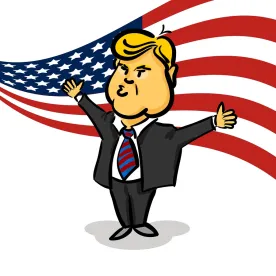Having released executive orders directing federal agencies to curb the issuance of new regulations and requiring a regulatory review of financial regulations, President Trump issued a new executive order on February 24, 2017 (the “Order”) to create a process within the federal agencies for implementing his administration’s deregulatory agenda.
The Order contains two general requirements. First, the Order requires each agency to designate an agency official as its Regulatory Reform Officer (“RRO”). Each RRO is to oversee the implementation of regulatory reform initiatives, including:
-
President Trump’s Executive Order 13771, requiring any “executive department or agency” to identify two regulations to be rescinded when issuing a new regulation;
-
President Clinton’s Executive Order 12866, requiring agencies other than independent agencies, as defined in 44 U.S.C. § 3502,[1] to submit their significant regulatory actions to the Office of Information and Regulatory Affairs in the Office of Management and Budget, and adhere to certain regulatory principles;
-
President Obama’s Executive Order 13563, section 6, requiring agencies other than independent agencies, as defined in 44 U.S.C. § 3502, to conduct retrospective analyses of rules that may be ineffective or excessively burdensome, and modify, streamline, or repeal such rules; and
-
termination of programs and activities deriving from or implementing executive orders or other policy documents that have been rescinded.
Second, the Order requires each agency to create a Regulatory Reform Task Force comprised of the RRO, the agency’s Regulatory Policy Officer designated under Executive Order 12866, a representative of the agency’s central policy office, and, for certain executive agencies referred to in 31 U.S.C. § 901, three additional senior agency officials. Each Task Force is to identify existing regulations to be repealed, replaced, or modified. At a minimum, those regulations should be ones that eliminate jobs or inhibit job creation; are outdated, unnecessary, or ineffective; or impose costs that exceed their benefits. The Order directs agencies to prioritize repealing, replacing, or modifying regulations identified by the Task Forces when implementing the regulatory offsets required under Executive Order 13771.
In performing these duties, the Task Forces are to seek input and other assistance, as permitted by law, from entities significantly affected by Federal regulations, including State, local, and tribal governments; small businesses; consumers; non-governmental organizations; and trade associations. The Order requires the Task Forces to report on their progress to their agency heads within 90 days, and periodically thereafter.
One significant question is how the Order applies to independent agencies, including many of the federal financial regulators. While previous executive orders of the Trump Administration have been expressly limited to executive agencies, the Order is directed, on its face, to all federal agencies. The Order also states, however, that it does not “impair or otherwise affect the authority granted by law to an executive department or agency, or the head thereof.” This savings clause would seem to invite an analysis by each federal agency of whether it is subject to the Order under applicable law.
In addition, many of the duties of the RROs and Regulatory Reform Task Forces under the Order relate to executive orders that, by their terms, do not apply to independent agencies. Furthermore, independent agencies not subject to Executive Order 12866 are not required to have designated a Regulatory Policy Officer, which raises the question of how such agencies would staff their Regulatory Reform Task Forces to comply with the Order.
Of course, regardless of the Order’s legal applicability in whole or in part, some or all of the independent federal financial regulators may decide to comply with all or parts of the Order voluntarily.
[1] 44 U.S.C. § 3502 defines “independent regulatory agency” to include the Board of Governors of the Federal Reserve System, the Consumer Financial Protection Bureau, the Office of the Comptroller of the Currency, the Federal Deposit Insurance Corporation, the Securities and Exchange Commission, and the Commodity Futures Trading Commission.




 />i
/>i


